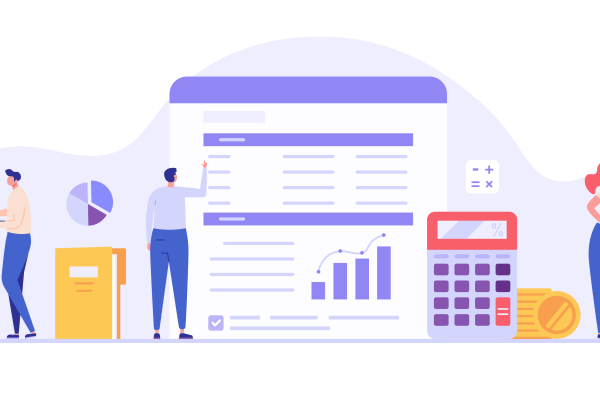After many years of collecting digital data, financial institutions have the opportunity to aggregate, analyze, and use data to improve business operations. But first, leaders must understand the role of advanced data analytics in finance and how banks and credit unions can use data to gain real-time access to insightful and actionable information.
The Role of Data Analytics in Banking
Financial institutions gather more data now than ever before. With advanced customer relationship management software, self-service and online customer platforms, and nearly endless transaction information, banks and credit unions have an abundance of data flowing within their systems.
Advanced bank analytics tools help financial institutions use this data to pinpoint existing issues, predict trends, and forecast future performance, so they can adjust their services and offerings accordingly. With a predictive rather than reactive approach, institutions can proactively manage resources, offerings, and risk to achieve success.
How Banks Use Advanced Analytics
Advanced analytics give financial institutions more accurate insight into business challenges and opportunities. With the right application of data analytics, banks can adjust operations to become more efficient, accurate, and profitable. Financial institutions can use advanced analytics in the following ways:
Predict Demand and Revenue
Especially during times of economic fluctuation, it can be difficult for financial institutions to accurately predict revenue. With advanced analytics, banks and credit unions can more accurately anticipate future demand and forecast revenue. This information empowers them to make more informed decisions across departments including sales, marketing, and operations.
Identify Profit and Loss Drivers
For financial institutions that offer a variety of products and services — such as checking accounts, mortgages, loans, credit cards, and wealth management services — data analytics can reveal the most profitable products and services while also identifying costly or disadvantageous offerings.
This can also highlight differences between sales made through online channels and those made at physical branches. Analytics can determine not only which channel has the highest frequency of transactions, but which channel’s transactions are most profitable. For instance, while online services may be used more frequently, customers may be more comfortable making large transactions in person.
Pinpoint Cross-Selling Opportunities
Advanced analytics can also help financial institutions examine customer behavior and identify individuals who are more likely to purchase additional products or services. Easily identifying cross-selling opportunities can lead to targeted marketing initiatives and ultimately boost bank profitability and strengthen customer relationships and loyalty.
Remain Competitive in the Market
By analyzing peer benchmarks and comparative data from organizations that are similar in size, geography, and portfolio, financial institutions can ensure that their offerings and overall strategy remain competitive in the market. Benchmarking against peer organizations can empower banks and credit unions to identify current strengths and competitive advantages, as well as areas where they may fall short and potential causes for customer attrition.
Detect and Prevent Fraud
Most banks and credit unions have systems in place to detect fraud but advanced data analytics empower proactive prevention, rather than simply detecting fraud after it occurs. For example, banks may use analytics to identify customers at risk of fraud and apply a higher level of security to those accounts, such as more thorough verification methods.
Types of Data Analytics Techniques
Data analysis in banking may include a range of activities and tools, including:
Data mining: Banks collect an enormous amount of data, often in the form of individual customer transactions. Data mining allows organizations to gather and analyze large volumes of data and interpret it into meaningful insights.
Modeling: With data modeling, financial institutions can analyze the relationship between different components of information and identify how those pieces of data fit together.
Predictive analysis: Predictive analysis is the process of using historical data, statistics, and machine learning to predict the likelihood of certain outcomes. Rather than simply understanding why something happened in the past, predictive analytics empower financial organizations to forecast what may happen in the future.
Machine learning: Machine learning is a type of artificial intelligence software that adapts or “learns” over time and thereby produces more accurate outcomes.
Dashboards: Banking dashboards provide at-a-glance views of reports and data visualizations that allow finance leaders to quickly gather insights and guide decision-making.
Data analytics plays a critical role in the finance industry. With advanced analytics tools designed specifically for financial institutions, such as Axiom™ Reporting and Analytics, banks and credit unions can take the enormous amount of information they gather each day and understand how to adjust operations, offerings, and services to better serve customers. Unlocking meaningful insights from near real-time data allows financial institutions to make more informed decisions, so they can succeed now and well into the future.
Learn more about reporting and analytics for financial institutions

At Atrium Health Navicent, ‘Axiom Financial Planning Helps Us Respond to Actual Changes as They Occur’

Best Practices for Minimizing Budget Variances in Healthcare


